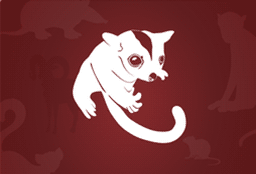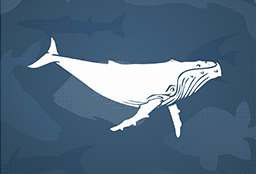Its head and upperparts are mostly dark grey, with a white eyebrow and throat, a narrow grey band across the upper breast and a creamy-buff belly. The feathers of its long tail have white edges and tips, and the tail is often fanned out.
Size
14 – 16 cm long
Large to small tree or shrub up to 25 m high (commonly around 5 m), branches, flower heads and lower surface of leaves greyish or silvery
Pneumatophores (erect, pencil-like aerial roots specialised for gaseous exchange) are numerous and project from shallow lateral roots.
Leaves
Leathery and measure up to 16 cm in length and 5 cm in width. They are ovate, pointed and arranged opposite one another on the stems. The leaves are glossy green above with a distinctive pale and slightly hairy, grey underside. Stomata (pores) and salt glands are scattered over the entire leaf surface but are more abundant on the underside. Leaves are often covered in crusted salt from the exuded secretions.
Flowers
Yellow-orange or golden. Flower clusters dense, arranged at leafy shoot tips; flower stalks 10 – 30 mm long. Flower 4 - 8 mm long with a corolla of four fused pointed petals 3 - 7 mm wide.
Dark grey to brown body, with lighter grey fur on its head and golden-orange fur encircling its neck. Its wings are black.
Distinctive feature
Fur on its legs that extends to its ankles.
Size
23 cm to 29 cm head and body length); wingspan over 1 m.
Dark grey to black on top and usually white on the belly. Humpbacks have very large, elongate pectoral fins, a small but prominent dorsal fin and a large, bushy blow (up to 5 m tall).
The large fins, dark tail with white underneath, active breaching and tendency to “hump” their backs and raise their tail out of the water before diving, distinguish humpbacks from other whales.
Size
Adult humpbacks can reach a length of up to 15 m.
A black and white bird, the pattern varies slightly between sexes. The male has a white eyebrow above a black horizontal eye-stripe, a black face and throat, while the female has a white face and throat, with a broad vertical stripe through the eye, and no white eyebrow. Both sexes have a thin white bill and black legs and feet. Juvenile Magpie-larks have a black forehead, white eyebrow and a white throat.
The top of its head and its hindneck are black. Its forehead is covered with bright-yellow skin, which hangs down to form wattles. The rest of the head is white. Its back and wings are pale grey-brown. Below, black plumage extends from the hindneck onto the sides of its breast, and the rest of the underparts are white. Its long legs and feet are reddish and its bill is yellow. It has a prominent spur on each wing.
Juveniles are similar to adults, but have dark ‘scallop’ markings on the back and wings, and the wing spur and wattles are either smaller or absent.
Distinctive feature
A yellow wattle that extends from its forehead to behind its eye and hangs down beside its chin.
They have a transparent mushroom-shaped bell. Its reproductive organs form a conspicuous clover-like shape when viewed from above. Numerous fine thread-like tentacles hang from beneath the edge of the bell.
The moon jelly is a favourite food of marine turtles.
Its species name banksii is after the English naturalist and botanist Sir Joseph Banks.
A small, brown seaweed (algae) which resembles a beaded necklace. It has branches (thalli) which are made up of strings of hollow, water-filled, round or oval-shaped beads joined together by a short stalk. Each bead is covered in many pores, giving it a rough surface. It is attached to the substrate by a thin disc (holdfast).
Size
Fronds 10 – 30 cm long, beads 5 – 15 mm in diameter, and holdfast 3 – 10 mm across.
Mostly black in colour with a light grey saddle behind the dorsal fin and a distinct white oval shaped horizontal patch behind the eye. The belly, underside of the jaw, and underside of the tail are also white. Mature males have a tall triangular-shaped dorsal fin while females and juveniles have a smaller, more curved dorsal fin.
Size
Adults reach a length of 10 m, dorsal fin up to 1.8 m in height.
The caterpillar (larva) is initially green, white and brown and resembles bird droppings. A mature caterpillar has a dark brown head, a green body with some pale yellow and brown markings, and spines along its back.
The male butterfly (adult) is black with an arc of creamy-white spots near the tip of each forewing. Each hindwing has a creamy-white patch and a single red spot, and there are many red crescents on its underside.
The female butterfly is brown to black, and the outer half of its forewing is whitish-grey. Its hindwing has a creamy-white patch, as well as a series of blue and red crescent-shaped markings.
Size
Caterpillar up to 6 cm long; Butterflies 10 – 12 cm wingspan.
Tiny, plain grey-brown and whitish wader with black legs and straight, gently tapering black bill, slightly swollen at tip. Shadowy dark line from bill through eye separates small white area over bill and subtle whitish eyebrow from whitish throat. Upperparts are grey-brown. Underparts are whitish with grey-brown zone on sides of upperbreast.
Size
13 – 16 cm
A medium-sized marine snail (mollusc). They are grey or off-white in colour, with 5 - 6 distinctive ridges spiralling up towards a sharp tip (apex).
Size
25 - 50 mm
Field Guide
Improve your identification skills. Download your Ribbed Top Shell guide here!
Its genus name Banksia is named after Sir Joseph Banks, a British explorer and naturalist, and its species name marginata is from the Latin 'marginatus' meaning bordered, referring to the recurved leaf edges.
A variable species that occurs as a shrub, a flat-lying plant, or a tree, with smooth brown-grey bark. Grows up to 2 m high and wide as a shrub, less than 1 m as a flat-lying plant, and between 5 – 12 m as a tree.
Leaves
Green on the upper surface and silvery underneath. Each leaf is linear to oblong-shaped, 1 – 8 cm long, 3 – 13 mm wide, and has finely-toothed edges. The edges are recurved (rolled under) and may have small serrations, and their tip can be blunt or squared.
Flowers
Pale yellow cylindrical spikes forming a bottle-brush shape. Each flower head is 5 – 10 cm long and 4 – 6 cm wide and attracts nectar-eating birds.
Fruit/seed:
The southern brown tree frog is native to southern Australia. Other common names of this tree frog are brown tree frog, whistling tree frog, or Ewing's tree frog.
Ranges from pale fawn, cream, or orange to light brown, although some individuals in western Victoria and South Australia are partly or completely green. It has a wide brown band that starts from between its eyes and runs down its back. Darker flecks are also scattered across its back. It has a narrow black or brown stripe that runs from its snout to its shoulder, and a pale stripe that runs from below its eye to the base of its arm. Its belly is white to yellow and breeding males have a light brown vocal sac (beneath their mouth).
Distinctive features
Its back is smooth with small lumps, its fingers have no webbing and its toes are half webbed.
The name ‘right whale’ was given to them by early European whalers who thought they were the ‘right’ type of whale to hunt. Their slow moving nature made them easy targets and their blubber was of high quality. They also floated when dead, making them much easier to move to shore.
Generally black with small patches of white on the belly and lacking a dorsal fin. They have a rounded head and short, spatula shaped flippers with a distinctive V shaped blow.
Distinctive feature
They have numerous, pale coloured callosities around the head.
A large jellyfish with a rounded bell shape that is clear or tinted brown or yellow. The bell has many obvious small white crystalline spots close to the surface that are evenly distributed.
The tentacles are located in the centre of the bell, with 8 individual arms visible. Two sets of tentacles are visible: one is short, fleshy (cauliflower-like) and the other is longer, clear to white (rope-like) and extend beyond the shorter fleshy tentacles. The longer tentacles also have white spots on their ends.
Grey soft fur, with a white belly and a black stripe that runs from its nose, over its head and along its back. It has a long bushy tail, the last quarter of which is black, often with a white tip. Its ears are large and hairless, and its large eyes are black.
Size
About 28 cm long (from nose to tip of tail).
They are called Surf Barnacles because they prefer to live in areas of medium to high energy wave action.
Small invertebrates that live inside hard circular or pyramid-like structures made from calcium-carbonate. They have eight main side plates, surrounded by many smaller ones, giving them a scaly appearance and are usually grey with a greenish tinge.
Size
20 mm high, 25-30 mm diameter.
Field Guide
Improve your identification skills. Download your Surf Barnacle guide here!
Mostly bright green, with a blue crown, cheeks and colouring on its wings. It has red around its bill, throat and forehead, and bright red patches under each wing. The red on its throat is edged with yellow and its long, pointed tail is purple-red. The female is slightly duller, with a creamy bar under its wings.
Size
About 25 cm; ; Wingspan 32 – 36 cm
A small green seaweed. It has dark round, forked fronds (branches) with a fuzzy appearance and a velvety or sponged texture.
Size
Up to 30 cm long.
Field Guide
Improve your identification skills. Download your Velvet Weed guide here!
Medium marine snails (molluscs) that float around in the open ocean. They have a purple shell that lightens in colour as you move towards the flattened top of the shell. The shell itself is very light weight and they have no operculum (lid). Their flesh is a dark purple or sometime black.
They float around the open oceans upside down, attached to a raft of mucus bubbles that they make.
Size
Up to 30 mm
Flower-like invertebrate that has many long tentacles surrounding a central mouthpart which is attached to a hard surface. These specialised fighting tentacles come from the acontia, which appear as white spots on the top of the column. At low tide or when disturbed, the tentacles retract and the anemone looks like a round blob of jelly. They range in colour from bright red, reddish-brown to dark purple.
Their tentacles contain hundreds of stinging cells called ‘nematocysts’ which the anemone uses to sting and immobilize their prey, and to do battle with other unrelated anemones. These are the same cells that give Blue Bottles their sting although most anemone species cannot penetrate human skin.
Metallic blue-black on top and light to dark grey on its breast and belly. Its forehead, throat and upper breast are rust in colour. It has grey legs and feet, and its eyes and bill are black. A young Welcome Swallow has shorter tail feathers than an adult and its forehead and throat are a creamy beige (instead of rust).
Distinctive feature
A deeply forked tail with a white band or row of spots on the long tail feathers.






